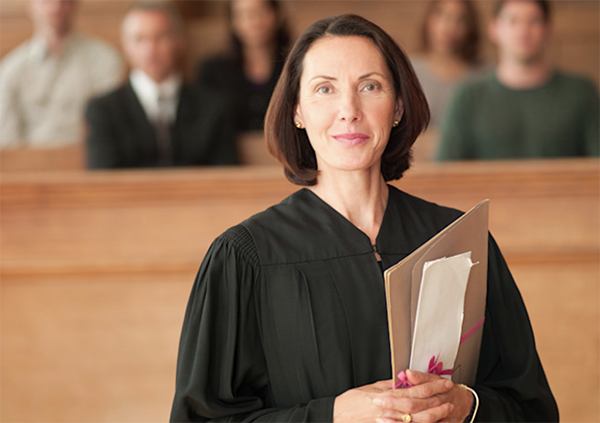Criminal Law
Understanding the Critical Safeguard of the ’13th Juror’
March 2025
By Paul Myslin

The right to trial by jury provides a body of impartial community members to evaluate the evidence and decide questions of fact in a criminal prosecution. It is a constitutional right guaranteed by the Sixth Amendment (and the Due Process Clause of the Fourteenth Amendment) that 12 jurors sit in any case where the penalty exceeds six months of incarceration. Similarly, Article 1, Section 16 of the California Constitution requires that a criminal jury in a felony case consist of 12 jurors, and that a jury in a misdemeanor criminal case or civil case consist of twelve jurors or a “lesser number agreed upon by the parties in open court.”
But is there a silent, 13th juror evaluating the case? And does that juror have the power to set aside the verdict of the other twelve?
The surprising answer is yes. The most critical safeguard of criminal procedure is oversight by the trial judge. Throughout the proceedings, the court is tasked with overseeing the process, making sure rules are followed, and keeping a sharp eye out for irregularities. In some situations, the potential error is obvious. For example, the defendant is absent from the trial without a waiver or permission from the court; the jury considers extraneous evidence that was not admitted in the trial; the jurors flip a coin to decide an issue in the case; or prejudicial misconduct by one or both of the attorneys occurs. Penal Code, section 1181 lists numerous grounds on which a defendant can file a new trial motion and undo the prejudicial effect of such error.
And sometimes a jury’s guilty verdict or true finding is contrary to the law or evidence. In such cases, the trial judge is empowered to independently review the evidence, without deference to the evidentiary finding of the jury. (Cal. Penal Code, § 1181, subd. (6); Porter v. Superior Court (2009) 47 Cal.4th 125, 133; People v. Davis (1995) 10 Cal.4th 463, 523.) Indeed, the court is acting as a “13th juror,” to decide whether the evidence is sufficient to prove each required element beyond a reasonable doubt “to the judge” (Porter, supra at 133, citing People v. Lagunas (1994) 8 Cal.4th 1030 at p. 1038 & fn. 6). The court is vested with broad discretion to determine sufficiency of the evidence, and this determination is reviewed for abuse of discretion. (People v. Robarge (1953) 41 Cal.2nd 628, 633; People v. Carter (2014) 227 Cal.App.4th 322.) In this capacity, the court has been called a “holdout for acquittal,” and reversal of a jury in this manner is the equivalent of a hung jury (double jeopardy does not bar retrial). (47 Cal.4th at 133.)
The Penal Code contains the following instructions to the trial court:
When the verdict or finding is contrary to law or evidence, but if the evidence shows the defendant to be not guilty of the degree of the crime of which he was convicted, but guilty of a lesser degree thereof, or of a lesser crime included therein, the court may modify the verdict, finding or judgment accordingly without granting or ordering a new trial, and this power shall extend to any court to which the cause may be appealed.
(Cal. Penal Code, § 1181, subd.(6).)
Thus the judge may reduce the conviction to a lesser crime, or set aside the verdict and order a new trial. In practice, this does not happen automatically, but requires a motion from the defense to raise the issue. See People v. Masotti (2008) 163 Cal.App.4th 504, 508 (new trial issue was found to have been waived where the court granted the motion on a separate ground than what the defendant had raised).
For more on motions for new trial based on insufficiency of the evidence, see California Criminal Law Procedure and Practice (Cal. CEB) chapter 34.
© The Regents of the University of California, 2025.
Unauthorized use and/or duplication of this material without express and written permission from CEB is strictly prohibited. CEB content does not render any legal, accounting, or other professional service; this content is not intended to describe the standard of care for attorneys in any community, but rather to assist attorneys in providing high quality service to their clients and in protecting their own interests. Attorneys using CEB content in dealing with a specific legal matter should also research original sources of authority. Any opinions contained in CEB content are not intended to reflect the position of the University of California. Materials written by employees of state or federal agencies are not to be considered statements of governmental policies.
This article was originally published by the legal news service of Continuing Education of the Bar (CEB). To read more news and analysis from CEB, register for a free account at research.ceb.com/news.
